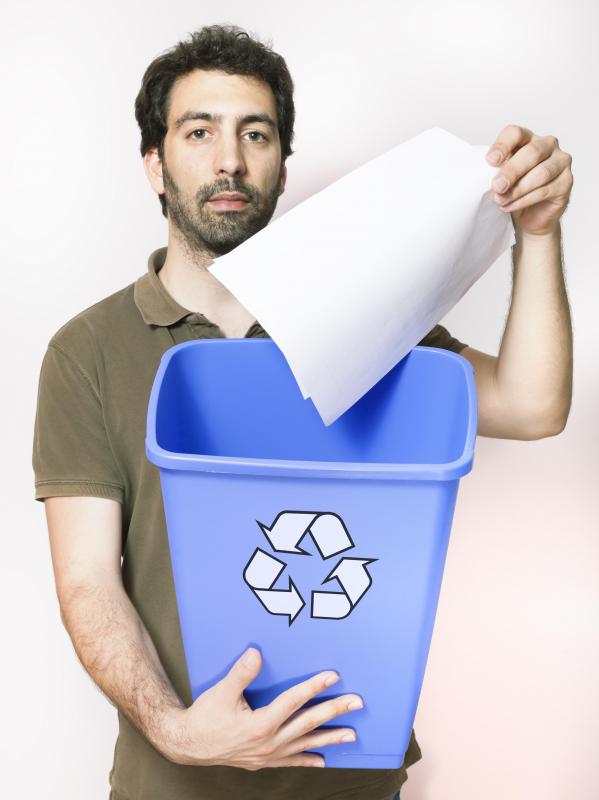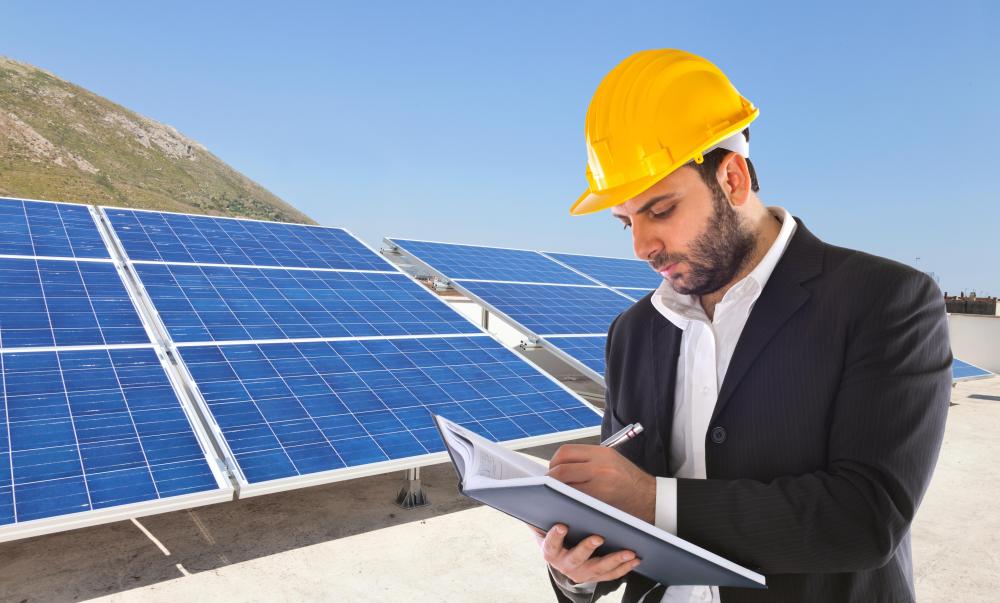At AllThingsNature, we're committed to delivering accurate, trustworthy information. Our expert-authored content is rigorously fact-checked and sourced from credible authorities. Discover how we uphold the highest standards in providing you with reliable knowledge.
What Are the Different Types of Resource Conservation?
Resource conservation is the practice of trying to preserve as much of the natural world and its resources as possible. Natural resources typically fall into two categories: renewable and non-renewable. Renewable resources are generally living things, such as forests, that will grow back after being cut or burned. Non-renewable resources are usually considered to be things that are not alive, and have taken perhaps millions of years to form, such as petroleum. Resource conservation techniques typically cover all the different types of resources we use.
Renewable resources such as water, clean air, forests, fish and animals are usually either replenished through the natural processes of the Earth or they reproduce regularly. Neither of these things mean that there is an unlimited supply of such resources, however. Polluted water could remain polluted under the right set of circumstances, for instance. Likewise, types of fish and animals can become extinct. Resource conservation is designed to help keep these things from happening and ensure that resources can be replenished naturally.

Non-renewable resources are generally those that are believed to be in limited supply. Most experts believe that the petroleum deep beneath the surface of the Earth took millions of years to form. The supplies are expected to run out one day, though exactly how far away that day may be is a source of controversy. Oil cannot be replenished quickly enough to make a difference right now, so oil conservation focuses on using less petroleum to make the supply last longer. The other important focus is to find alternative energy sources that can be used in place of petroleum products.

Resource conservation is unique for each type of resource because each is generally used for a slightly different purpose. They still have many techniques in common, though. Conserving water, for instance, often focuses on encouraging people to avoid wasting water and to use less whenever possible; oil conservation uses a similar tactic by encouraging people to use less gas through carpooling, walking and bicycling when they can. Additionally, most resource conservation stresses how consumers can cut back their use of certain items by choosing alternative or recycled items instead.

Not all resource conservation requires avoiding certain things. There are also positive steps that include actions such as planting trees and using recycled paper goods or reusable materials. Likewise, energy conservation is not just about using less electricity, but stresses using wind or solar power instead of coal, oil or gas. Many special products, such as water-saving washing machines and low-flow shower heads, are designed for saving water by using less while using it more efficiently. Government programs for planting forests, using renewable energy, recycling and reducing waste are also a large part of overall resource conservation.
Frequently Asked Questions
What is resource conservation and why is it important?

Resource conservation involves the careful management and protection of natural resources to prevent depletion and ensure sustainability for future generations. It's crucial because it maintains biodiversity, supports ecosystems, and helps balance the environment. By conserving resources, we also preserve the health of our planet and the well-being of all its inhabitants.
What are the main types of resource conservation?

The main types of resource conservation include water conservation, soil conservation, energy conservation, and biodiversity conservation. Each type focuses on sustaining specific resources: water conservation aims to protect aquatic ecosystems, soil conservation prevents erosion, energy conservation reduces consumption and greenhouse gas emissions, and biodiversity conservation maintains the variety of life on Earth.
How does water conservation contribute to resource conservation?
Water conservation is a key aspect of resource conservation, as it ensures the availability of clean water for drinking, agriculture, and habitats. Techniques like rainwater harvesting, efficient irrigation, and reducing water waste contribute to maintaining water levels in aquifers and reducing stress on freshwater ecosystems, according to the Environmental Protection Agency.
What role does soil conservation play in environmental sustainability?
Soil conservation is vital for environmental sustainability as it prevents soil erosion, maintains soil fertility, and supports crop production. Practices such as contour plowing, crop rotation, and the use of cover crops help retain soil structure and nutrients, which are essential for food security and preventing desertification, as reported by the Food and Agriculture Organization.
Can you explain energy conservation and its impact on resource conservation?
Energy conservation involves reducing energy consumption through efficient technologies and behaviors, which in turn decreases the demand for fossil fuels and lowers greenhouse gas emissions. This has a direct impact on resource conservation by preserving non-renewable energy sources and mitigating climate change, thus protecting ecosystems and promoting sustainable development.
Why is biodiversity conservation considered a critical type of resource conservation?
Biodiversity conservation is critical because it ensures the survival of a wide range of species and the genetic diversity they represent. This diversity is essential for ecosystem resilience, providing services like pollination, pest control, and nutrient cycling. The loss of biodiversity can lead to ecosystem collapse, making its conservation a priority for environmental stability, as highlighted by the United Nations' Sustainable Development Goals.
AS FEATURED ON:
AS FEATURED ON:















Discuss this Article
Post your comments